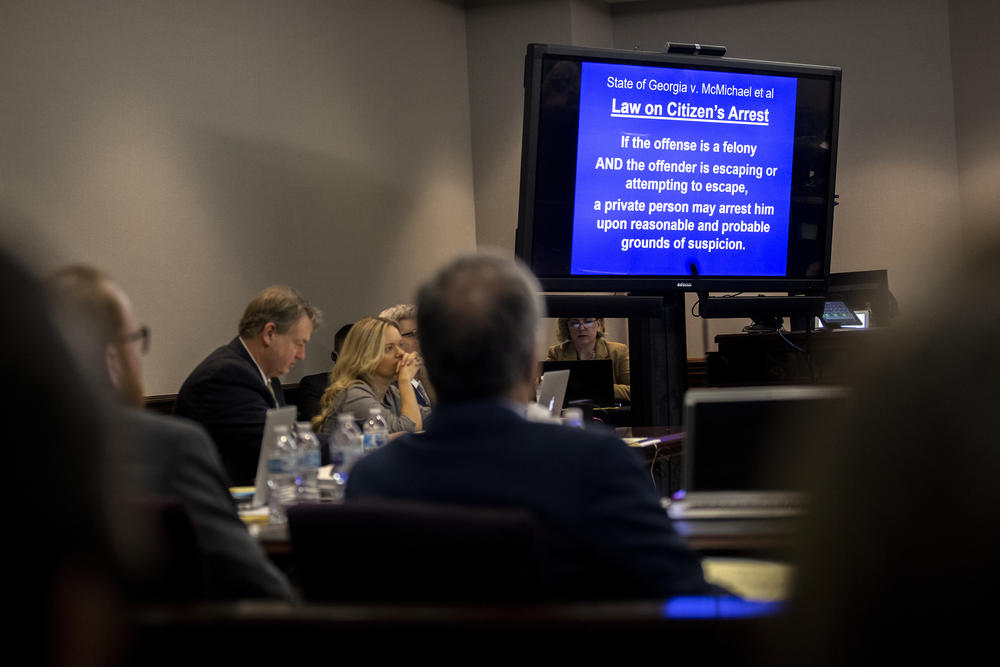
Caption
Defense attorney's listen prosecutor Linda Dunikoski's closing argument to the jury during the trial of Travis McMichael, his father, Gregory McMichael, and William "Roddie" Bryan, at the Glynn County Courthouse, Monday, Nov. 22, 2021, in Brunswick, Ga.
Credit: Pool photo


